Hi Ferdinand,
Here is a little teaser for those who might be heading to next summer’s FOHBC event in Manchester, New Hampshire. We shot these images this fall while visiting the Shelburne Museum in Shelburne, Vermont (just south of Burlington, Vermont on Lake Champlain). True, these two towns are about three hours apart. However, if you a collector and you find yourself in the area, this is a museum well worth visiting. Plan on spending at least one day here in order to fully take in all it has to offer.
Steve Ketcham
Antique Bottles, Advertising & Stoneware
steve@antiquebottledepot.com
www.antiquebottledepot.com
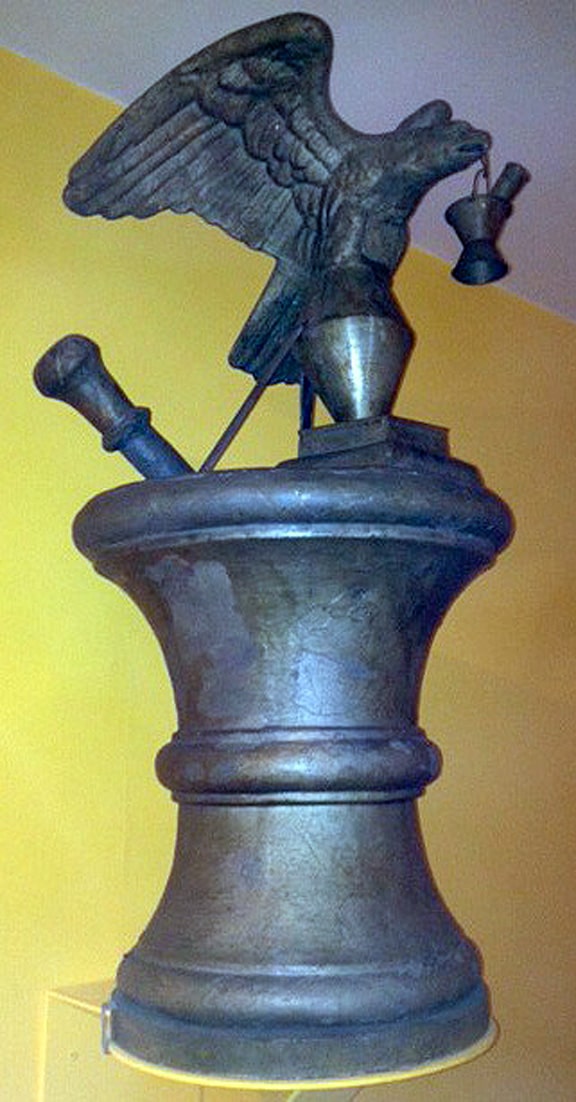
Fantastic metal, three-dimensional apothecary trade sign seen in the Shelburne Museum folk art exhibit.
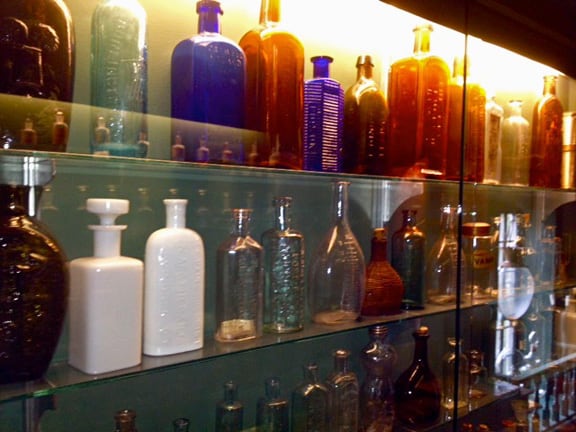
Multiple cases of flasks, bitters, patent medicines and all manner of apothecary glassware are found in this apothecary shop exhibit. An outstanding country store exhibit is found in an adjacent room.
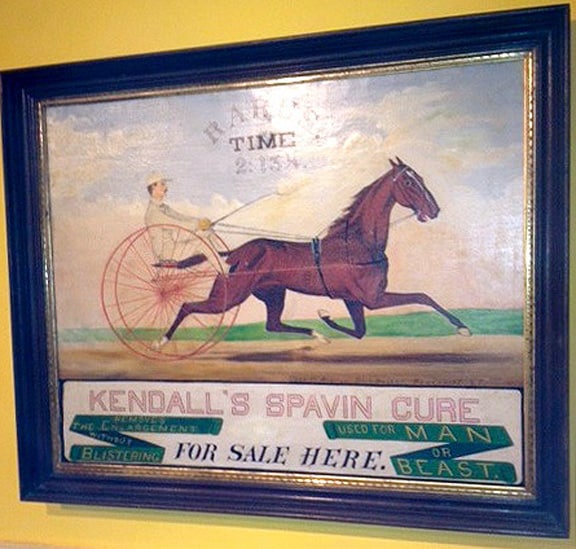
Hand-painted advertising sign for Kendall’s Spavin Cure as seen in the Shelburne Museum folk art exhibit.
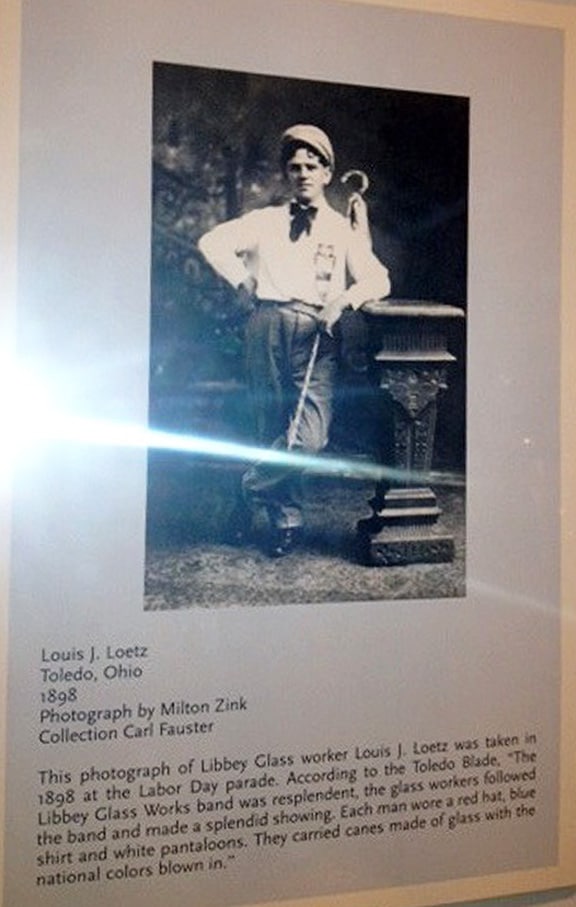
Have you ever wondered why all those glass canes were made? They clearly could not serve the traditional purpose. The paragraph below this photo offers one explanation. It reads, “This photograph of Libbey Glass worker Louis J. Loetz was taken in 1898 at the Labor Day parade. According to the Toledo Blade, ‘The Libbey Glass Works band was resplendent, the glass workers followed the band and made a splendid showing. Each man wore a red hat, blue shirt and white pantaloons. They carried canes made of glass with the national colors blown in.'”


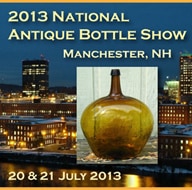
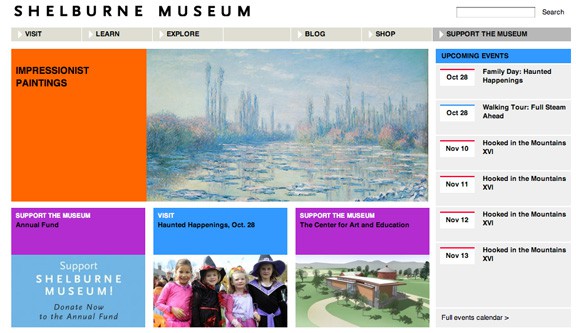
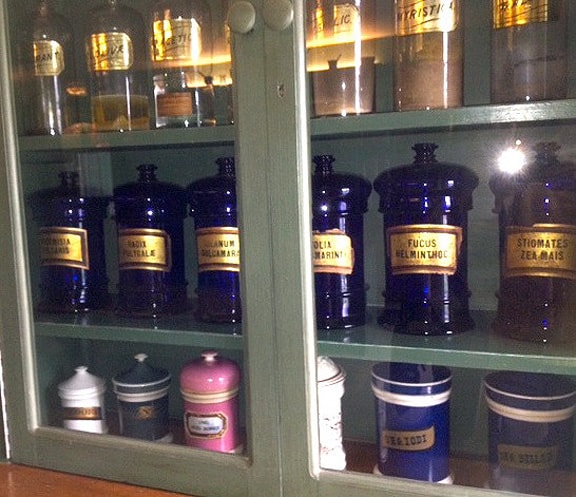
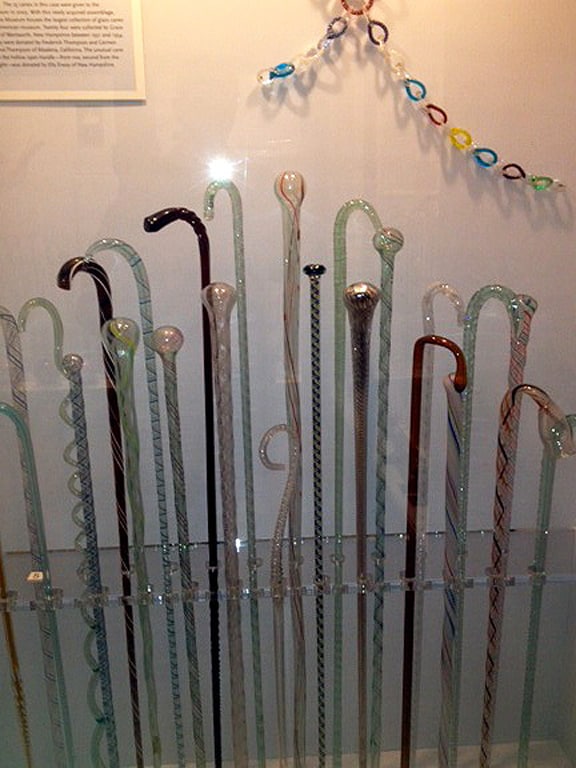
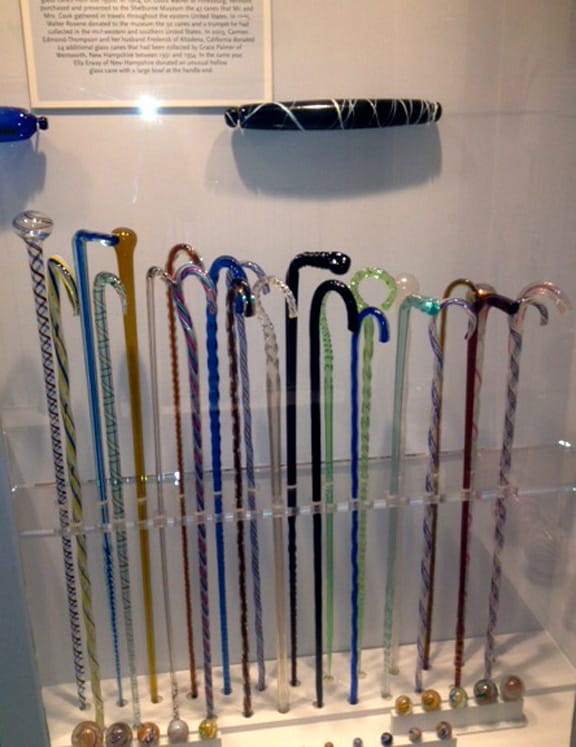


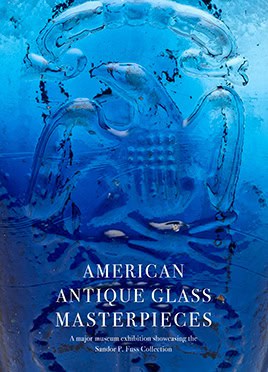
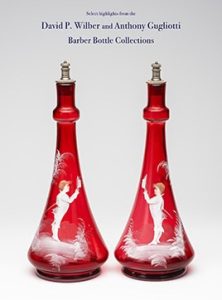


Ferdinand,
In my book, Early Glassworks of California, I have a paragraph written on September 24th, 1888 from a S.F. newspaper titled “The Great Parade” which describes the 120 workers from the San Francisco & Pacific Glass Works marching in a body each carrying a long glass rod with an American Flag attached. A glass furnace in a truck filled with melted glass with glassblowers blowing glass as they proceeded through the streets.